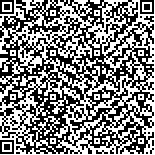下载中心
优秀审稿专家
优秀论文
相关链接
摘要

森林地上生物量反演对理解和监测生态系统及评估人类生产生活的影响有着重要作用,日益发展的遥感技术使全球及大区域的生物量估算成为可能.近年来,不同的遥感技术和反演方法被广泛用于估算森林生物量.本文首先总结了现有的全球及区域生物量产品及其不确定性,然后综述了3类方法在森林地上生物量遥感反演中的应用,即基于单源数据的参数化方法、基于多源数据的非参数化方法和基于机理模型的反演方法,阐述了各类反演方法的特点、优势及局限性.最后从机理模型研究、多源遥感数据协同、生物量季节变化研究和遥感数据源不断丰富4个方面对今后的生物量遥感反演研究进行了展望.
Forest Above Ground Biomass (AGB) estimation is important for ecosystem monitoring and carbon cycling studies. Accurately estimating regional and global AGB can reduce the uncertainty of carbon budgets.Over the last six years, regional and global forest AGB have been derived from various remote sensing data, including spaceborne LiDAR data (height and vertical structure parameters), optical multispectral data (Vegetation Index (VI), Leaf Area Index (LAI), Absorbed Photosynthetic Active Radiation (APAR), image texture, Digital Surface Model (DSM) and optical point cloud), and microwave data (backscattering coefficient, coherence, scattering phase center height, and DEM). In this study, we reviewed the advantages and limitations of three kinds of inversion methods, i.e., parametric method based on single sensor data, non-parametric method based on multi-sensor data, and a method based on physical mechanism models.First, parametric method mainly obtains multiple regression equations by analyzing the statistical relationship between AGB and various remote sensing variables. The method is simple but strongly dependent on site and time. Second, non-parametric methods were used to solve nonlinear and high-dimensional problems, including decision trees, k-nearest neighbors, artificial neural network, and support vector machine method. Such method is widely used in global and regional AGB estimation, but it lacks a physical mechanism and its accuracy depends on the number of training data sets. Third, the method based on mechanism models includes direct inversion using semi-empirical models and a look-up table method based on forest forward simulation model. Method usage is limited because of the contradiction between the accuracy and complexity of the model.As for remote sensing data used in AGB estimation, the spectral variables extracted from optical data have been widely applied. Radar is unaffected by weather conditions and it is capable of obtaining signal from branches, trunks, and even understories. Backscattering coefficient with SAR image, interferometric coherence with InSAR, vertical structure with Pol-InSAR, and backscattering contribution ratio of ground and vegetation with PCT technology are all closely related to AGB. Advances in LiDAR technology have demonstrated a capability to obtain the height and three-dimensional structure of forests, but its limitations include canopy species recognition and lack of spaceborne data.AGB estimation by combining multi-source remote sensing data has become a development trend because the data obtained from different portions of the electromagnetic spectrum and different observation configurations provide comprehensive information on forests. However, the retrieval accuracy did not meet the demands of ecosystem monitoring and carbon cycling study thus far. The uncertainties were attributed to the complexity of forest structures, mixed pixels and scale effect, as well as errors in allometric equations. The four potential aspects of biomass inversion studies to improve accuracy are presented: forest physical mechanism model study, multi-sensor synergy method, biomass seasonal and time variation study, and future data sources support.

